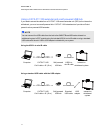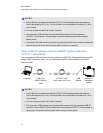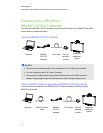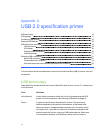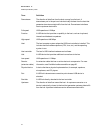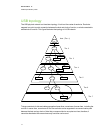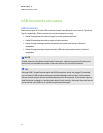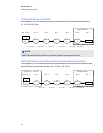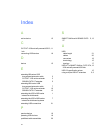
USB cables
For full-speed and high-speed connections, USB 2.0 specifications allow two types of cable
assemblies:
l a standard detachable cable that is terminated on one end with a Series-A plug, and terminated
on the opposite end with a Series-B plug
l a captive cable that is terminated on one end with a Series-A plug, and has a vendor-specific
connection on the opposite end for the peripheral
l a standard detachable cable that is terminated on one end with a Series-A plug, and terminated
on the opposite end with a Series-B plug
l a captive cable that is terminated on one end with a Series-A plug, and has a vendor-specific
connection on the opposite end for the peripheral
I M P OR T A N T
Any other cable assemblies are prohibited.
Prohibited cable assemblies
USB 2.0 specifications prohibit specific cable assemblies. Prohibited cable assemblies may work in
some situations, but they cannot be guaranteed to work in all instances.
An example of a prohibited cable is the “extension cable.” This type of cable assembly has a Series-A
plug and a Series-A receptacle or a Series-B plug and a Series-B receptacle. This “passive” extension
cable allows you to connect multiple cable segments, possibly exceeding the maximum permissible
cable length.
Another example of a prohibited cable is one with both ends terminated in either Series-A plugs or
Series-B receptacles, allowing two upstream ports or two downstream devices to be connected
together.
A P PE N D I X A
USB 2.0 specification primer
20



